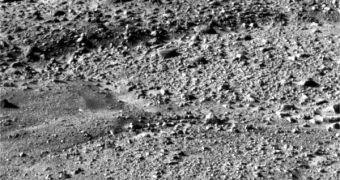The Phoenix Mars Lander has now more than 24 hours on the Red Planet and it is still undergoing preparations for expected digging missions, which it will need to complete in the following months. As soon as it set foot on Martian soil, Phoenix went right to work and in approximately two hours after the landing it sent its first pictures back to Earth, revealing the polygon-shaped soil patterns, previously reported by the spacecrafts in orbit around Mars. These weird shapes are believed to be created by the freezing and defrosting of ice just below the dusty surface.
"We've only looked at one tiny little slit", said principal investigator Peter Smith of the University of Arizona.
However, before it starts digging, Phoenix will have to take more pictures of the area around the landing site and complete the checkouts on the instruments it is carrying. According to Barry Goldstein, Project Manager at NASA's Jet Propulsion Laboratory, the first diagnosis of the on board systems revealed that the protective cover of the digging arm did not unfold properly, albeit the problem is minor since it will not interfere with the correct operation of the arm.
Today, engineers operating the lander will move the robotic arm for the first time. Nevertheless, digging is scheduled to start in more than a week from now, to reveal the ice about 30 centimeters bellow the layers of soil.
The polygon patterns in Mars' north polar regions are rather similar to those seen in the polar areas of Earth, which is why this particular area was chosen as a landing site. "I was just afraid that it'll be so flat and homogenous and that we'd be digging in soil and we wouldn't know the context", said Ray Arvidson from the Washington University.
In its 10 month journey to Mars, the Phoenix lander traveled more than 675 million kilometers. Seven minutes before touchdown, its autopilot pointed it towards the planet's atmosphere and began descent, deployed the parachute and landed it safely on the surface with the help of thrusters. The maneuver was is fact extremely dangerous, although all went well, except for the fact that the parachute of the spacecraft opened seven seconds later, taking Phoenix slightly farther away from the designated landing spot.
During its first three months on the Red Planet, Phoenix will investigate whether the ice in the landing site melted in the past or more recently and search for any evidence of organic compounds. Phoenix is unable to detect fossils or microscopic living organisms in the soil of the planet.

 14 DAY TRIAL //
14 DAY TRIAL //